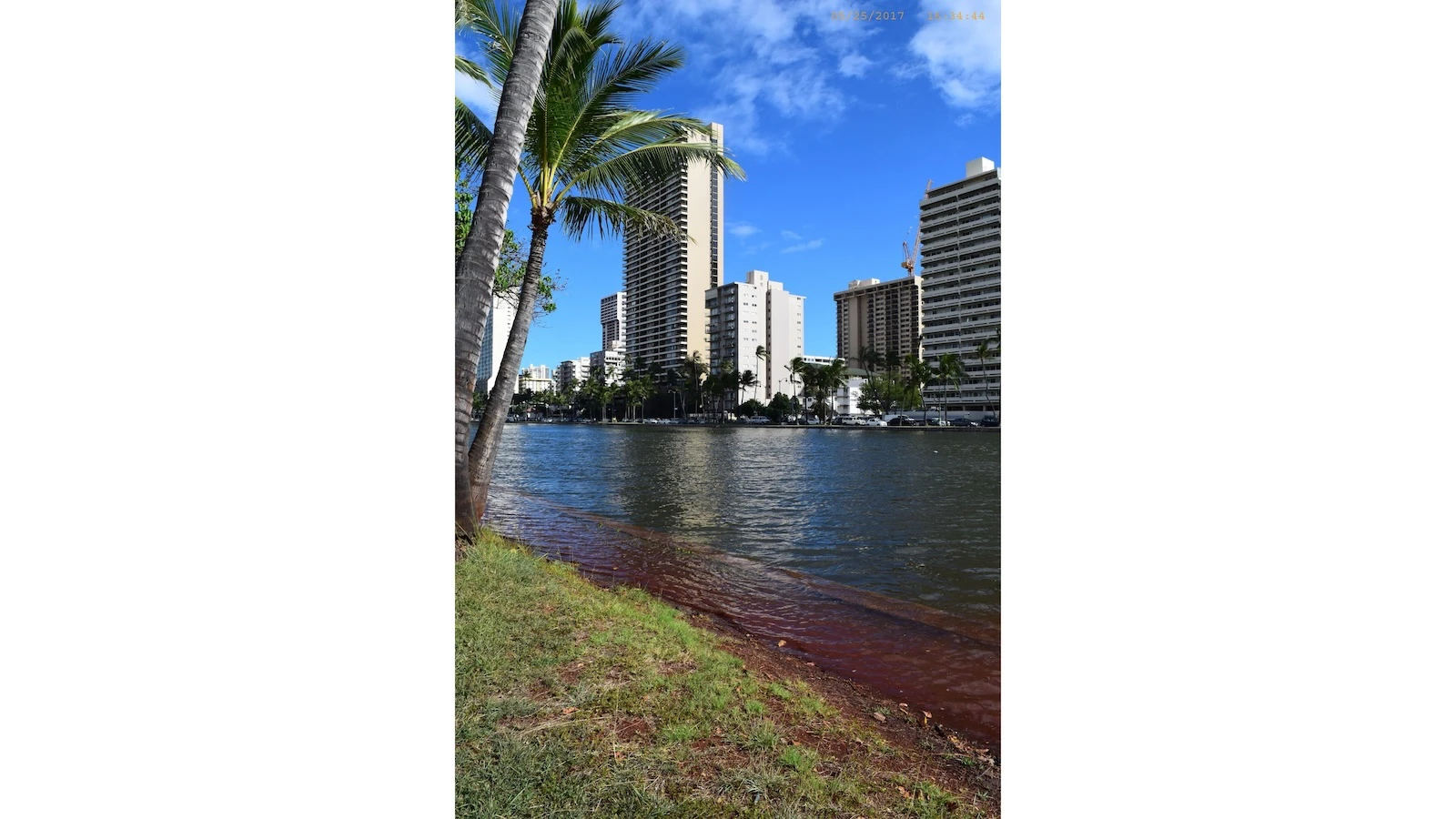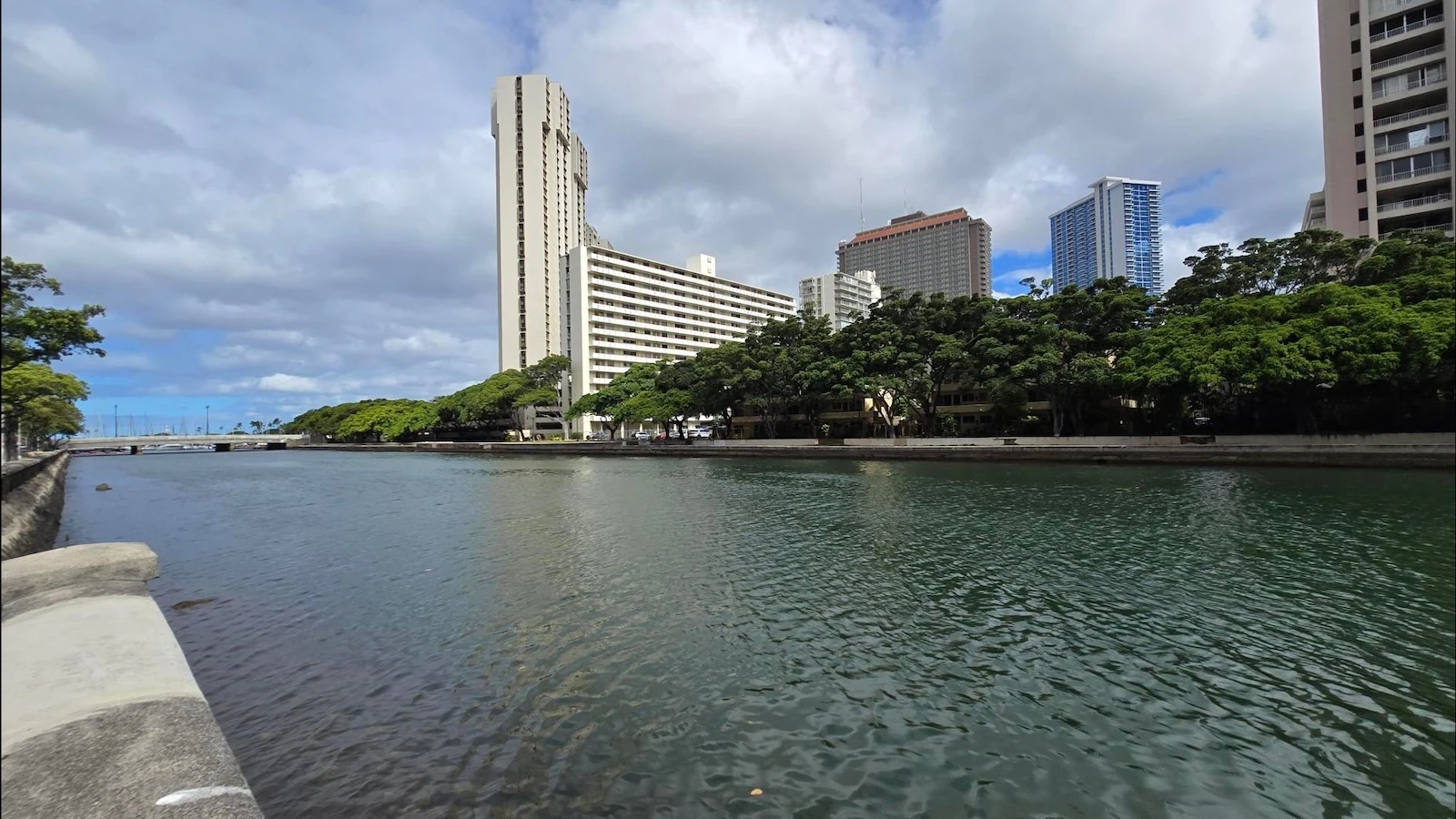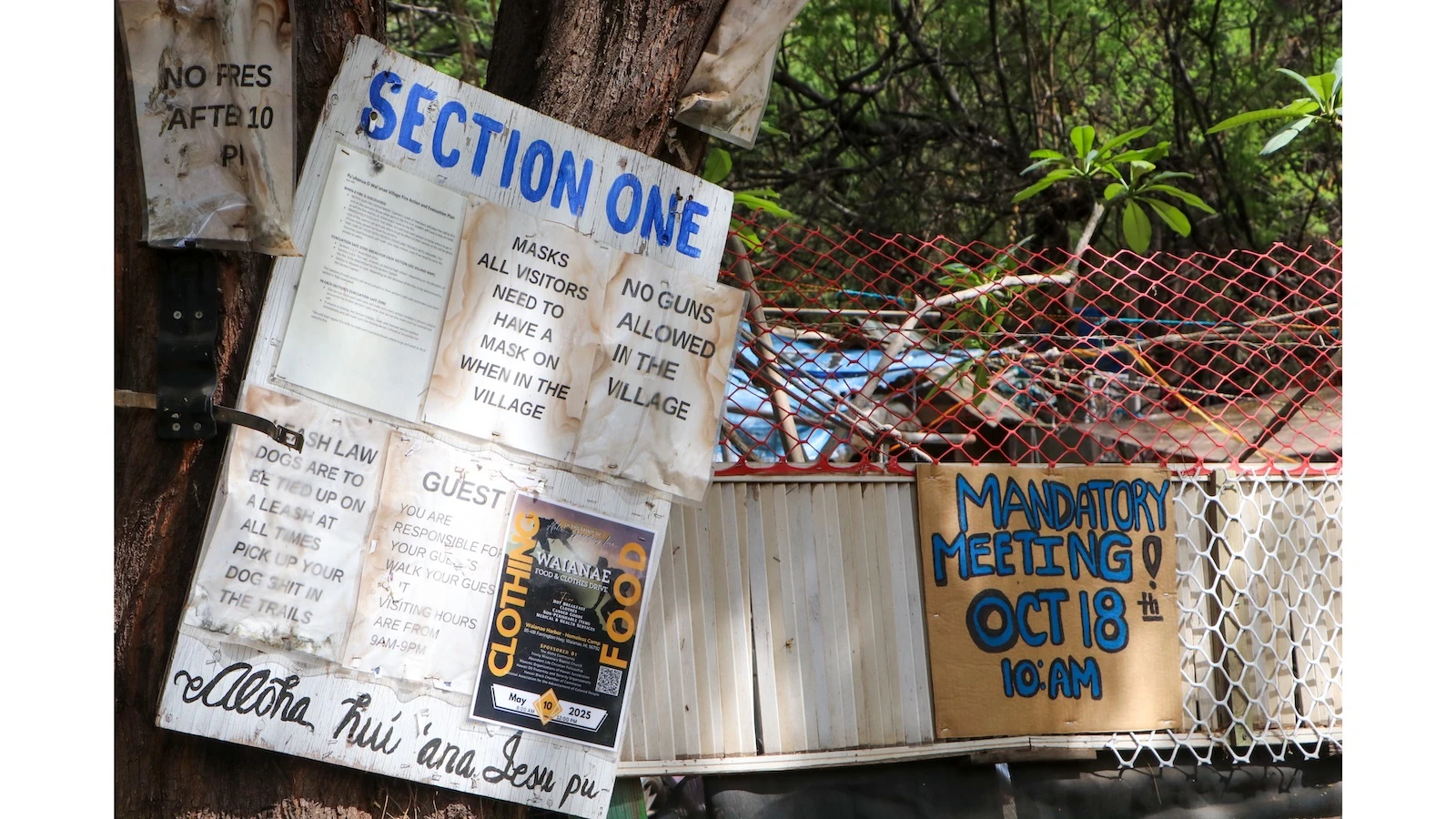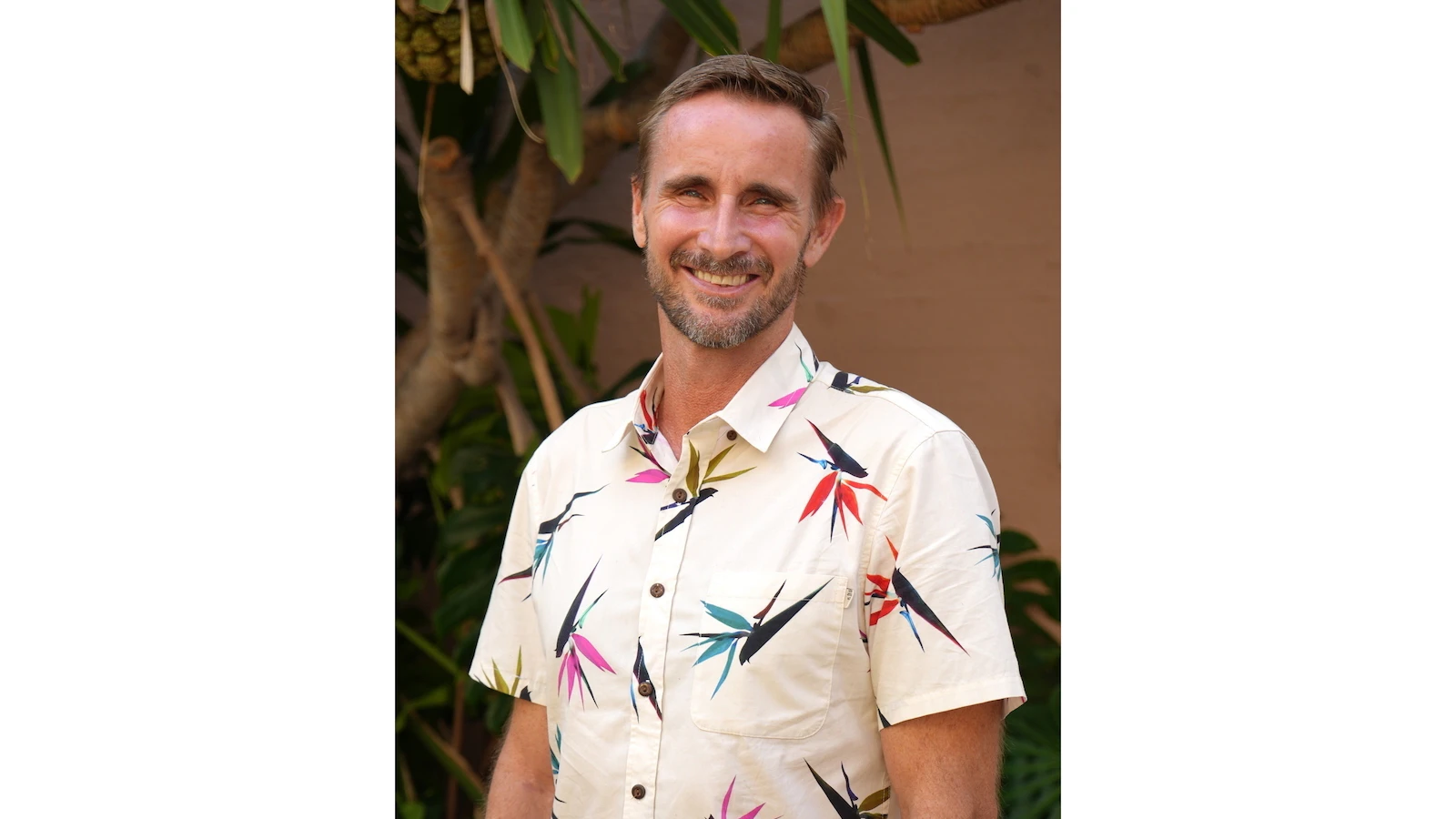Researchers with the University of Hawai‘i at Mānoa warn that Waikīkī could see regular failures of its stormwater drainage systems by 2050.
A study published this month in the journal Scientific Reports found that, between sea level rise and high rainfall events, the streets of Waikīkī could become filled with Ala Wai Canal water within 25 years.
Chloe Obara, lead author of the study, told Aloha State Daily that there have been prior studies of the effects of king tides on Waikīkī drainage, but no similar research into the combined impacts of rainfall and sea level rise.
According to the study, currently 71% of the system’s drainage outfalls — where water is released into the canal or the sea — are submerged below the highest point in the tidal cycle. With two feet of sea level rise added to that, 100% of those outfalls will be underwater.
One NASA climate change projection currently anticipates a two-foot sea level rise by 2060. However, heavy rainfall events could cause a 100% drainage failure early, as the study found that a five-year event could “cause flooding severe enough to disrupt transportation and contaminate stormwater inlets across 71% of Waikīkī” by 2050.
“It’s a public health issue,” Obara said. “Because, you know, the Ala Wai Canal is known to be contaminated. And that’s not exactly the sort of water you want in the streets of your main tourist area.”

Chip Fletcher, a co-author of the study and currently the dean of the UH Mānoa School of Ocean and Earth Science and Technology, said the situation is a “slow-motion trainwreck,” as the inexorable rising sea levels lead to more frequent drainage failures.
Obara, who was a UH Mānoa graduate student at the time of the research, said storm drainage systems like Waikīkī’s are vulnerable from multiple sources. For example, if the water level at the drainage outfalls rises too much, it has a plugging effect where gravity is no longer sufficient to drain water from the system.
Similarly, backflow from storm surges or high tides can similarly prevent proper drainage.
And, if some outfalls are already not draining properly, Obara said heavy rainfall events could be enough to flood the system entirely.
This has happened before: a winter storm followed by a king tide in December 2021 overwhelmed Waikīkī’s drainage capacity, leading to flooding throughout the area.
At the same time, the study also notes that tidal backflows increase corrosion within the drainage system, which exacerbates the chance of failure.
Obara said the 2050 date provides policymakers a deadline by which a solution needs to be found.
“I think pump drainage would have to be considered,” Obara said, adding that Miami, which is also similarly threatened by climate change, has already installed pump stations to drain stormwater.
The study mentions other possible solutions, such as elevating certain infrastructure such as roadways and drainage outfalls, or implementing green technology such as permeable pavement, which would allow stormwater to simply pass through instead of collecting as runoff.
However, Fletcher said that no solution is easy. The Miami Beach pumps, he said, are extremely expensive, while permeable pavement would only be useful as a stopgap measure for a few decades before the rising sea levels elevate the area’s water table to the point that the ground becomes too saturated for proper drainage.
“Sea level rise is not going to stop, even if we stopped our greenhouse gas emissions now,” Fletcher said. “We’ve got to live with sea level rise basically permanently.”
Fletcher said the “billion-dollar question” is whether Waikīkī can continue to serve as such a prominent tourist destination in the face of increasing climate pressure on its infrastructure.
“Given our poor track record in slowing climate change … we’re probably looking at multi-meter sea level rise over the next century,” Fletcher said. “So will our solutions still be effective against that?”
Still, Fletcher commended the City and County of Honolulu for addressing the problem. The city Department of Planning and Permitting in 2023 launched a working group called Adapt Waikīkī 2050 to develop a climate adaptation plan for the district to address projected climate impacts over the coming decades.
According to the Adapt Waikīkī 2050 website, that adaptation plan is scheduled to be released within the next year.
For the latest news of Hawai‘i, sign up here for our free Daily Edition newsletter.





